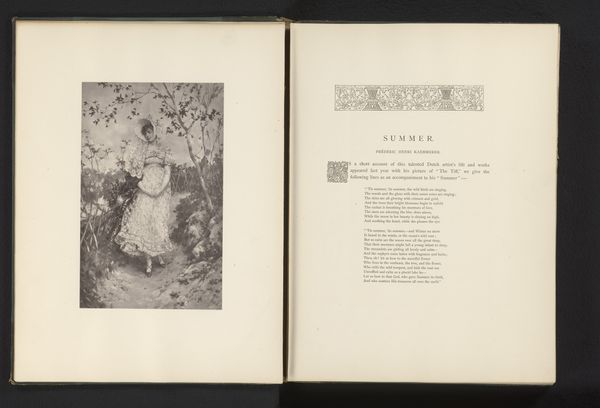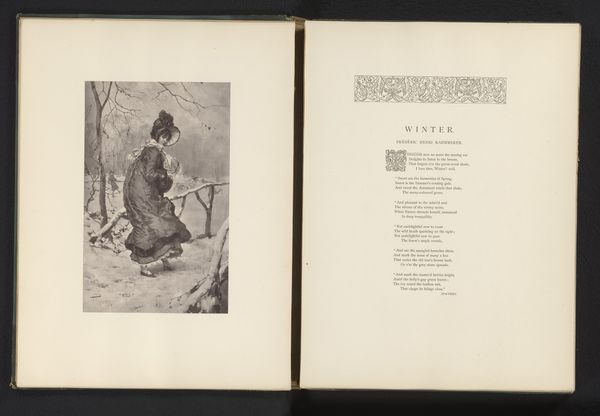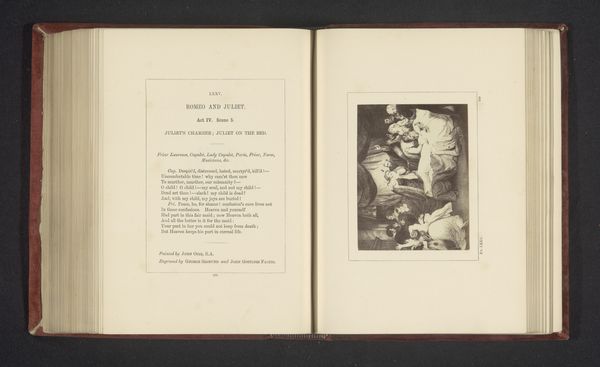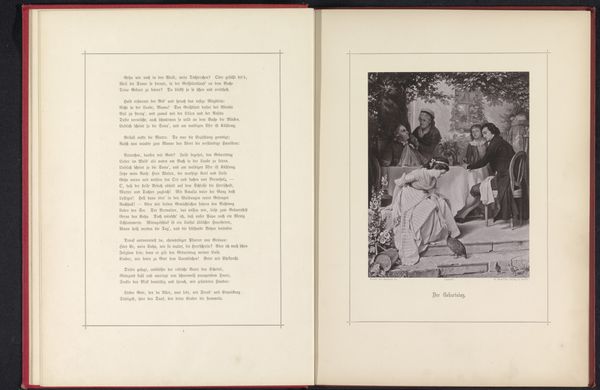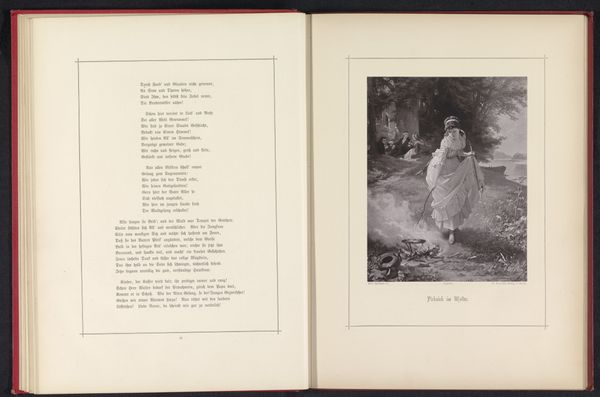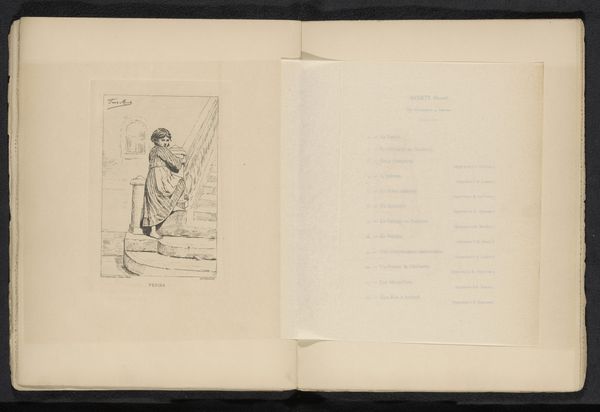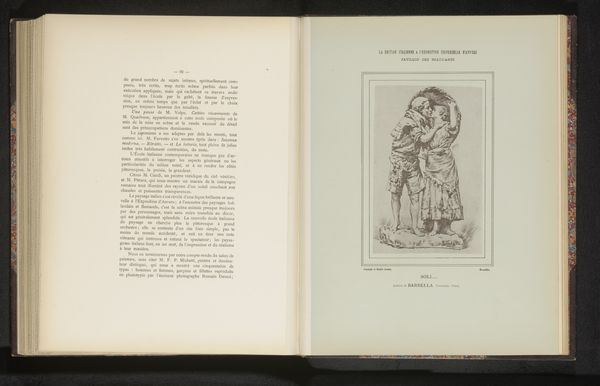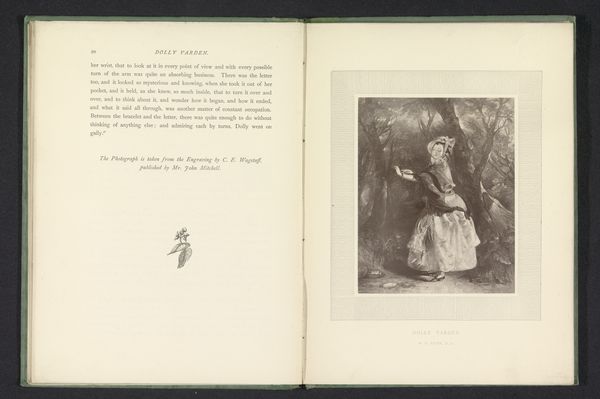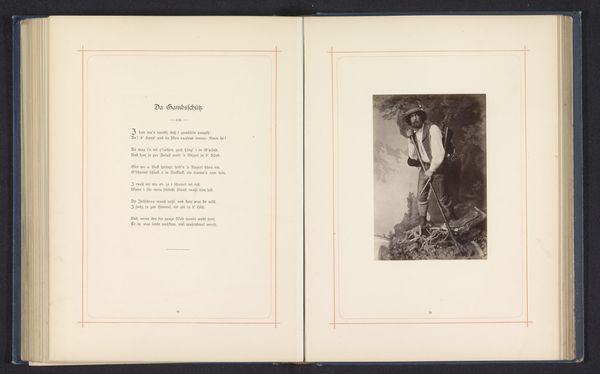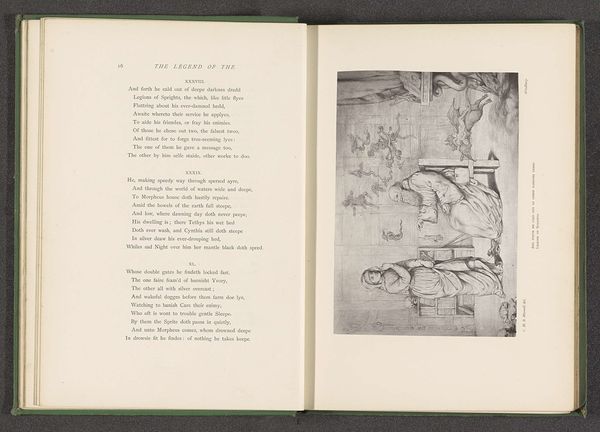
Dimensions: height 277 mm, width 187 mm
Copyright: Rijks Museum: Open Domain
Editor: This is "Ballerina knielt huilend neer voor staande man," or "Ballerina kneeling, weeping, before a standing man," a lithograph made in 1892 by Henri-Gabriel Ibels. The minimalist rendering in a single green hue strikes me as incredibly poignant, really amplifying the somber mood. What do you see in this piece? Curator: Immediately, the stark contrast in form arrests the eye. The standing figure, enveloped in a heavy robe or cloak, presents a solidity, an almost architectural mass against the vulnerability implied by the kneeling figure. Editor: Yes, it feels like the solid figure is looming, and the ballerina is almost swallowed by her tutu. Curator: Consider also the dynamic of line at play here. The sweeping curve delineating the ballerina's posture mirrors, yet inverts, the almost geometric verticals and diagonals of the standing man. It generates a kinetic tension within a static image. Is the negative space as palpable as the figures themselves? Editor: I think so, it almost isolates each character further, doesn't it? Is there a particular meaning conveyed by the use of only one color? Curator: Restricting the palette encourages us to focus on the essence of form and line; in a formal sense, it declutters our interpretation and demands greater attention be paid to composition, forcing us to consider these components beyond colour. Editor: That's a great point. I was so drawn to the immediate emotional impact, I hadn't really broken down how the different components contributed to it. Curator: Art, when truly effective, wields emotion from form, an equilibrium worth studying in every encounter with it.
Comments
No comments
Be the first to comment and join the conversation on the ultimate creative platform.


